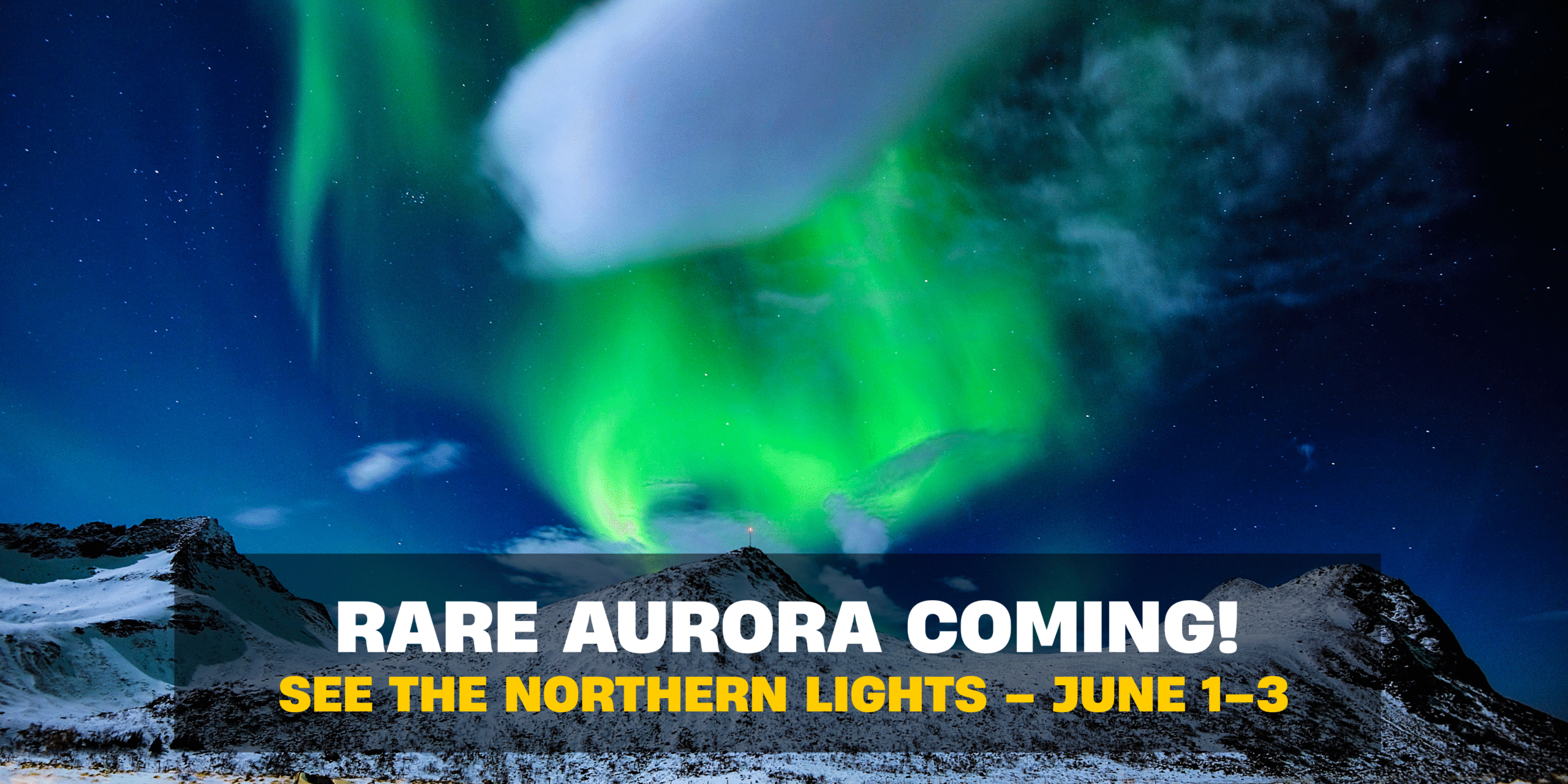Brace yourselves for a sky spectacle like no other! Northern Lights June 1–3: A Strong Solar Storm Will Strike Earth, Setting The Stage For A Rare, Brilliant Lights Display Over Parts Of The U.S This is a direct hit from a coronal mass ejection (CME) and has the potential to send this cosmic event much further from the usual aurora zones✱ than Maine, Illinois, and in places across the Midwest and South.
So whether you have binged sky watching over the weekends available or you just learning about the magic that shines above you, do not miss out on this one event. Continue reading to find the best times, areas and tips to watch!
Aurora Alerts: When to Watch Northern Lights June 1-3, 2025
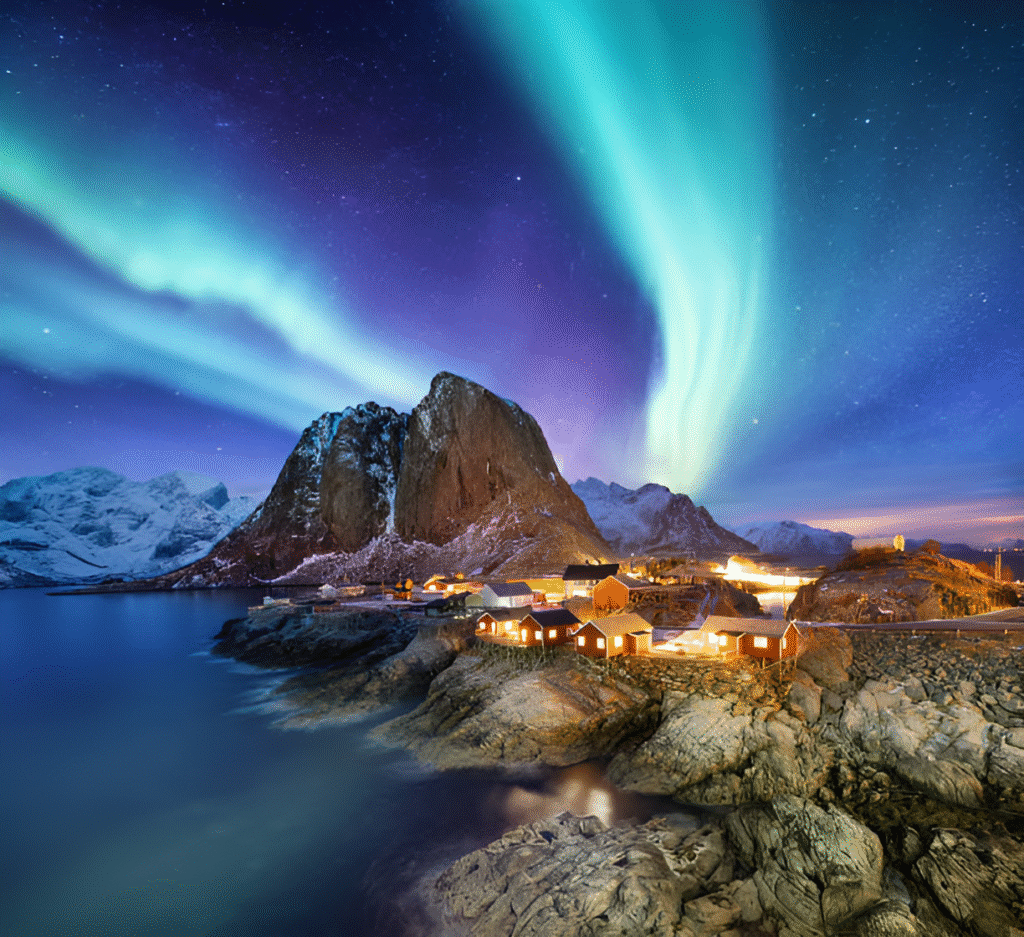
Sunday, June 1
- Aurora Viewing: excellent south of Millinock (and out of the mountains).
- How to see it: Find a dark spot away from city lights and look to the north.
Monday, June 2 – The Main Event
- A G4 storm, second of its kind, is on the way. This is your best opportunity to see a bright light show.
- Clear skies all over the state means that nearly everyone in the Pine Tree State will get a good look.
Tuesday, June 3
- An even weaker G3 storm is predicted, too — one that is still expected to remain visible with the naked eye.
- Attention, photographers: Your long exposure may reveal something amazing in the dark.
What is the Northern Light?
One of the most beautiful and enigmatic of nature’s spectacles seen on Earth, this Lights. These colorful waves of light twist through the night skies in the high-latitude areas of the Northern Hemisphere, a performance that has mesmerized, beguiled and inspired humanity for hundreds of years.
The Science Behind the Aesthetic
Because they develop around Earth’s magnetic poles, it are also known as polar lights with the respective aurora names being A.borealis in the north and A. Australis in the south. These amazing light shows are actually the result of what is going on on the surface of the Sun.
Not only is it burning fusion energy, but the Sun gives off a constant stream of charged particles (mostly electrons and protons, the solar wind). Earth’s magnetic field usually serves as a protective shield, redirecting this wind around the planet. However, when the Sun goes wild, such as during solar storms or coronal mass ejections (CMEs), enormous clouds of energetic particles break out of the Sun and race through space at greater than 2 million miles per hour.
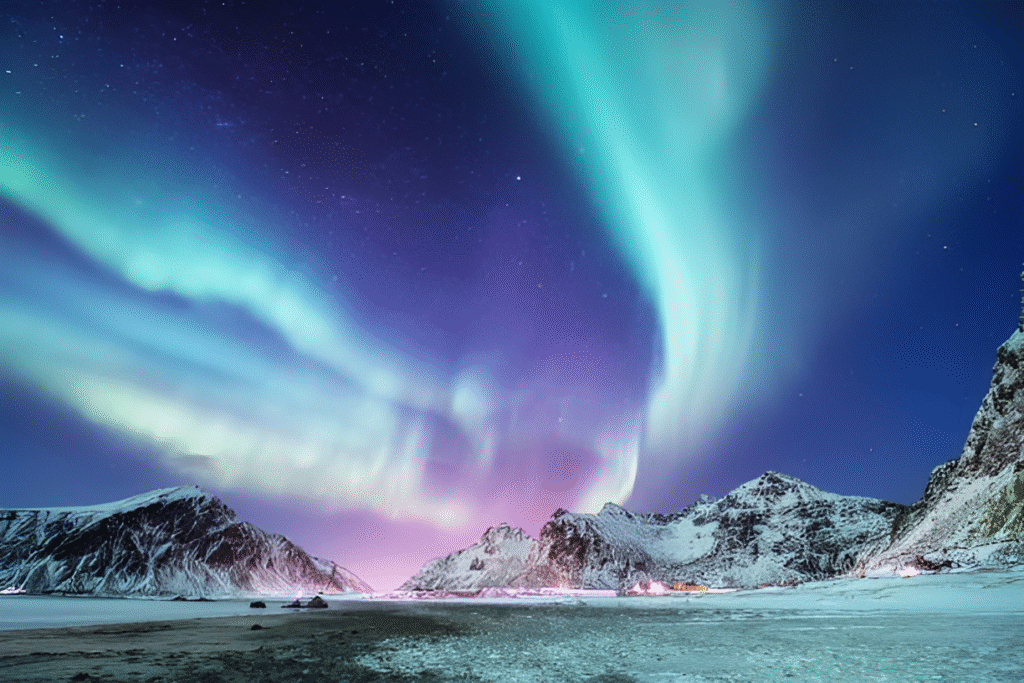
How the Lights Are Formed
Once these charged particles reach Earth, some become trapped in Earth’s magnetic field and funneled down into the upper atmosphere close to the magnetic poles. When these particles strike against the gases (oxygen and nitrogen) of our atmosphere, they excite the atoms and molecules of gas and emit energy in the form of light.
That’s similar to how a neon sign or an old cathode-ray tube TV glowed, but works a bit differently. These microscopic collisions happen in millions at a time across the sky, yielding a spectacular display of colorful movement.
Colors and Forms
- The most common color is green, which is derived from oxygen around 60 miles above earth.
- At over 200 miles, red becomes rarer – created by high-altitude oxygen.
- The nitrogen molecules create purple, blue, and pink hues.
You see the lights in many shapes, from wavy curtains to pulsing glows to spirals and arcs. Shape-shifting as it is, the aurora is dictated by the lines of Earth’s magnetic field and how strong the solar wind is at any given moment.
Northern Lights Airlines and Local Times World Map
You can see auroras in high-latitude locations in northern Canada, Alaska, Scandinavia, and Iceland. The best opportunity to do that in the Northern Hemisphere is August to May, a season where the skies are dark, and the solar activity is high.
Even at times when solar activity is low there will be an appearance of smaller auroras, but extremely powerful geomagnetic storms can send the lights as far south as the continental U.S., the UK and parts of central Europe.
About Geomagnetic storms: Boosting the Aurora
The strongest auroras typically occur in the days after significant solar eruptions called coronal mass ejections. Such CMEs release billions of tons of solar material into neighboring space. These bursts of solar wind disturb Earth’s magnetosphere, triggering geomagnetic storms—space weather events that can disrupt technology on the ground and dramatically increase aurora intensity.
These types of storms not only colour the sky — they can influence power grids, satellites and GPS systems. Nevertheless, they also afford you the memory of seeing auroras far outside the traditional viewing areas.
A Cosmic Connection
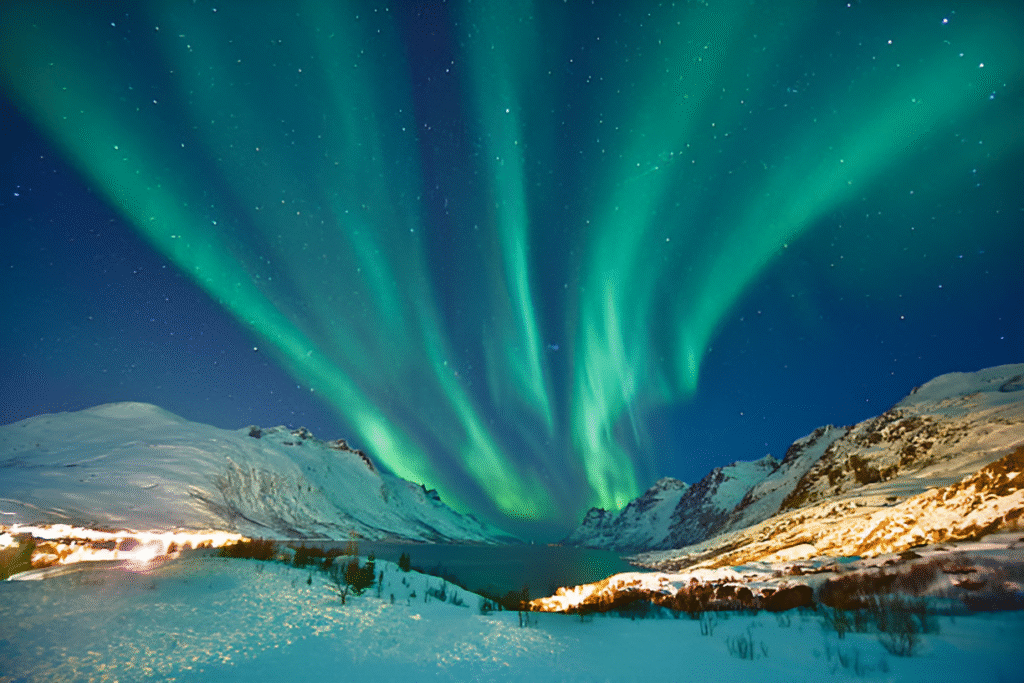
Not just a pretty sky, the northern light convey a quantitative and qualitative record of Earth’s connection with the Sun and the invisible forces of space. For scientists, photographers, and curious travelers alike, Aurora borealis is one of those once-in-a-lifetime events that borders on the spiritual.
So next time you are under a northern sky, pause and gaze at the stars. You will see the colors of the universe dancing in front of you.
How To See Aurora Borealis
- Head North: Locate a response to the poles.
- Dodge light pollution: Get way out of city lights.
- Focus with a long exposure camera: Your eyes will see dim lights, but if you take a picture with a camera you can see everything is more bright.
- To catch a glimpse (or a snap) of the aurora:
- Find a dark northern region that has low light pollution.
- Look at aurora forecasts (my Aurora forecast app or Space Weather Live are great ones)
- DSLR long exposure capture – Because then you see the colors more intense than you actually can with your bare eyes!
- Be Warmly Dressed–Even in summer, nighttime temperatures can fall below freezing.
- Use apps like:
- My Aurora Forecast & Alerts
- Space Weather Live
Bottom line: Do not pass up this opportunity for a natural and rare show in the sky!
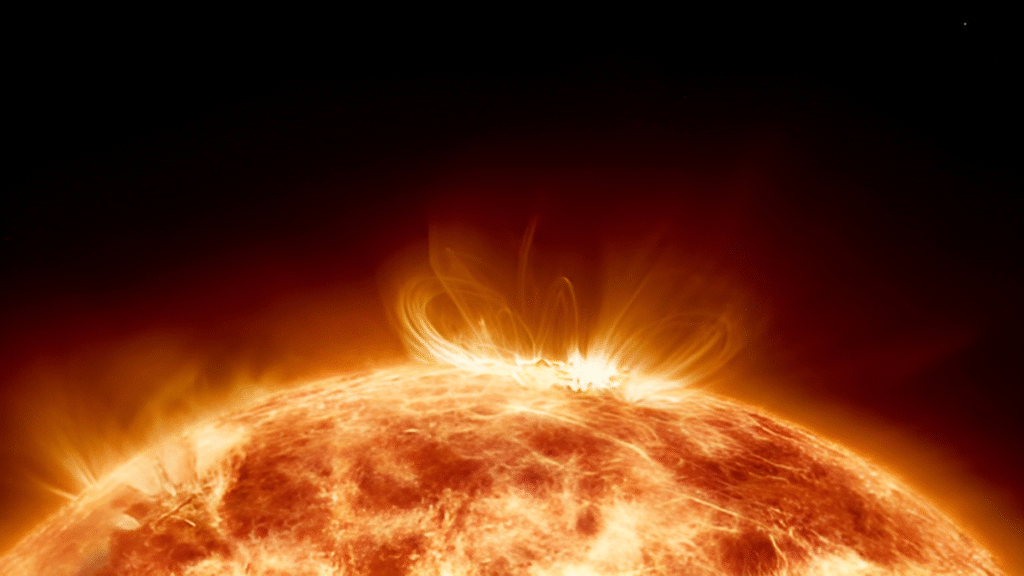
One of the most stunning displays in nature are the N. lights — and because of this unusual, strong solar storm millions of Americans will be able to view them without a telescope from June 1–3, 2025. If you live in Maine, the Midwest or even parts of the southern U.S., this is a once-in-a-decade opportunity to catch the aurora borealis dancing in your local night sky.
So grab your camera, get out to a low-light place where you can see the northern horizon well and watch the skies. Under these levels of geomagnetic activity and with the skies in many places set to be largely clear, this could be the most stunning view weekend in many years.
The stars are showing up tonight for you so do not slip off stage either.
